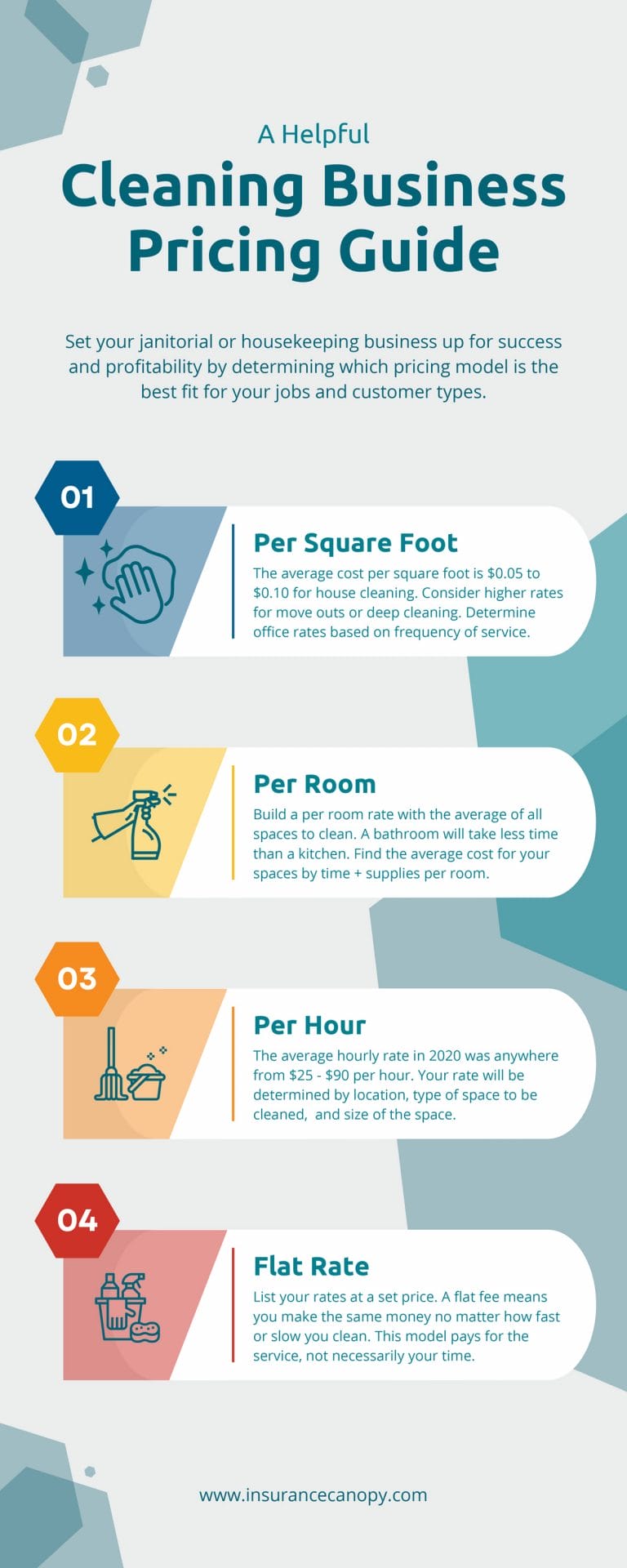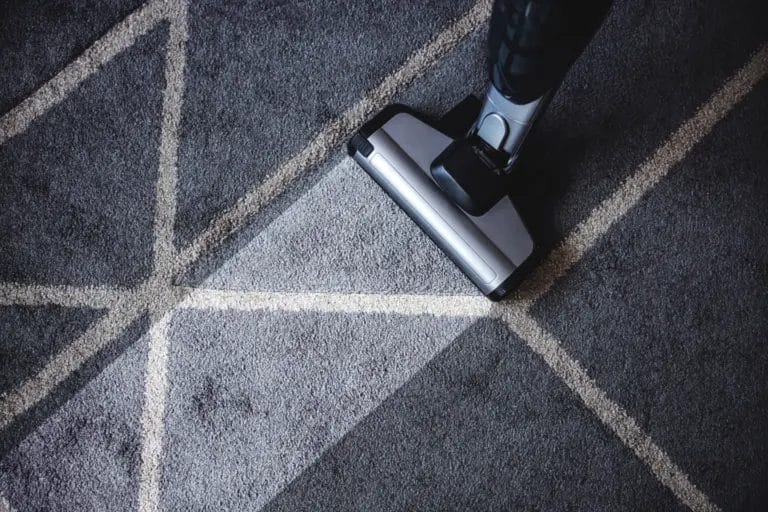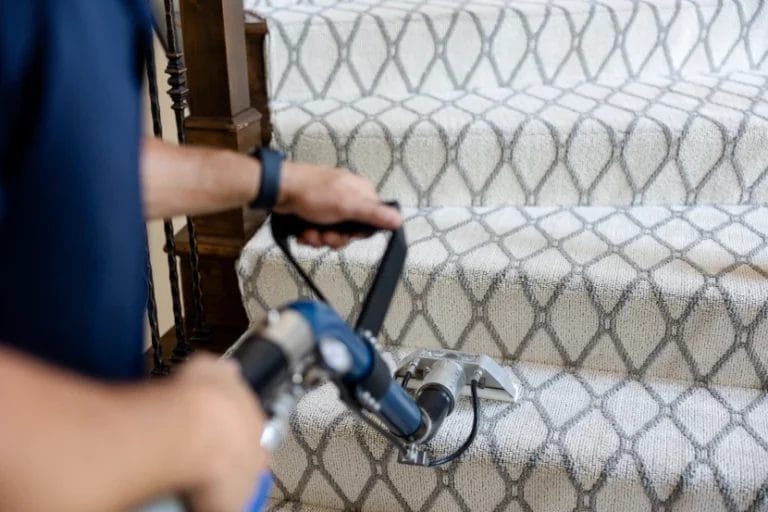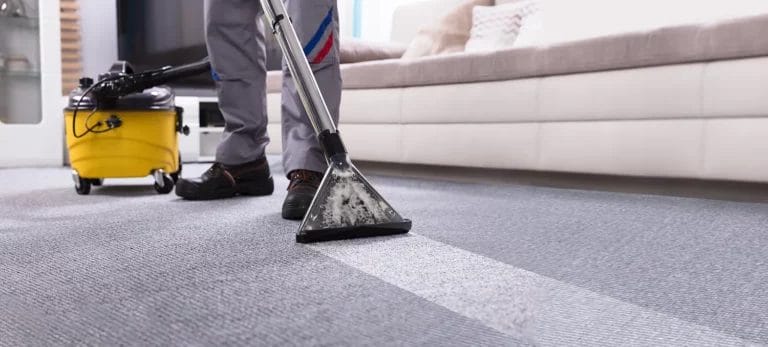Figuring out how to price cleaning services is no easy task. It’s all about finding that sweet spot—you don’t want to scare off customers with high prices, but you also want to ensure you’re not selling yourself short. Striking a balanced cleaning business pricing structure is crucial for your cleaning business thrive. We’re here with the resources to make sure you’re good to start making spaces shine!
Why Proper Pricing is Crucial
Proper pricing is the backbone of any successful cleaning business. It’s the difference between running a profitable enterprise and barely making ends meet. Let’s break down why getting your pricing right is crucial:
- Financial Stability: Imagine trying to clean a house with a broken vacuum—it’s inefficient and frustrating. Similarly, without proper pricing, your business can’t operate smoothly. Setting your rates correctly ensures that you cover all your costs, from supplies and equipment to wages and overheads, and still have a buffer for unexpected expenses. This financial stability allows you to invest back into your business, whether it’s upgrading equipment, expanding your team, or enhancing your marketing efforts.
- Competitive Edge: In the cleaning business, competition is fierce. Proper pricing helps you stand out in the crowd. If your rates are too high, potential clients might look elsewhere. If they’re too low, you might attract clients, but at the expense of your profitability. Finding the sweet spot allows you to offer competitive rates that appeal to customers while ensuring you remain profitable.
- Value Perception: Just like a spotless window showcases the beauty of a room, your pricing reflects the value of your services. Clients often associate higher prices with higher quality. If your rates are too low, clients might doubt the quality of your work. On the other hand, well-thought-out pricing can reinforce the perception that your services are top-notch, trustworthy, and worth every penny.
- Growth and Scalability: Proper pricing sets the foundation for growth. With the right pricing strategy, you can scale your business more effectively. Whether you want to expand your services, enter new markets, or invest in advanced cleaning technologies, having a solid pricing structure ensures you have the necessary resources to support your growth ambitions.
- Customer Trust and Retention: Consistency in pricing builds trust. Clients appreciate knowing what to expect and are more likely to become repeat customers if they feel they are getting fair value for their money. Transparent and fair pricing fosters long-term relationships, leading to loyal customers who not only return but also recommend your services to others.
- Profit Maximization: At the end of the day, your goal is to run a profitable business. Proper pricing ensures you’re not leaving money on the table. By accurately accounting for all costs and incorporating a reasonable profit margin, you maximize your earnings. This profitability is crucial for sustaining and growing your business, allowing you to achieve your long-term business goals.
Understanding the Cleaning Business Price List
Understanding the cleaning business price list is key to setting your prices competitively while still ensuring profitability.
Fixed Costs
Fixed costs in the cleaning business are always there, no matter how many spills you tackle. These expenses, such as office space, utilities, insurance, and equipment maintenance, stay constant regardless of how many homes you’re scrubbing clean. When setting your prices, make sure these costs are covered, so you’re not left holding the dirty end of the stick.
Variable Costs
Variable costs are like the stains you encounter—some are predictable, but others can surprise you. These include supplies, transportation, and labor. Accurately calculating these costs for each job ensures you’re not wiping away your profits. Remember, every spray bottle and scrub brush adds up, so keep track to stay in the green.
Hidden Costs
Hidden costs are the dust bunnies under the couch—easy to miss but crucial to address. These include insurance, taxes, licensing fees, and miscellaneous expenses. These costs might not be as obvious as a coffee stain on a white shirt, but they can significantly impact your bottom line. Factor them into your pricing to ensure you’re not losing money on each job, and keep your business shining bright.
Pricing Models for Cleaning Services
Hidden costs are the dust bunnies under the couch—easy to miss but crucial to address. These include insurance, taxes, licensing fees, and miscellaneous expenses. These costs might not be as obvious as a coffee stain on a white shirt, but they can significantly impact your bottom line. Factor them into your pricing to ensure you’re not losing money on each job, and keep your business shining bright.
Flat Rate Pricing
Charging a flat rate or fee means performing a service for a set price, making the same amount of money no matter how fast you get the job done or how large the property is. This cleaning business pricing structure solves the problem of the client feeling like they are paying for your time. It’s like setting a fixed menu price at a restaurant—clients know exactly what they’re getting and for how much.
Hourly Rate Pricing
One way to ensure your time is valued is to charge customers by the hour. Some customers may be skeptical that hourly rates will benefit your cleaning business more than them. However, this cleaning business pricing structure allows you to fully customize their cleaning plan.
For example, there is a high demand for professional Airbnb cleaners willing to clean short-term rental spaces between visitors. Charging by the hour allows you to add small tasks like counting silverware or laundering bedding. Make sure to outline detailed tasks for hourly rates to illustrate your value clearly.
Hourly pricing rates depend on the location you service. Compare and discuss rates with clients to find a sweet spot for your service. Think of it as finding the right balance between elbow grease and fair pay.
Per Room
Setting your cleaning business pricing structure on a per-room basis works best for residential or commercial properties. To calculate these accurately, having time and experience in the cleaning industry is essential for building a profit margin. Figuring out how to price your cleaning services per room is easy enough: take the average time per job and how many rooms you cleaned.
For example, residential cleaners know that cleaning the bathroom will take longer than the living room, so averaging the time between them is how you calculate the cost. If the living room costs $40.00 to clean and the bathroom $60.00, then your average room cleaning cost would be $50.00 per room. Think of it like dividing chores at home—some tasks just take longer than others!
The downside of cleaning services pricing on a per-room basis is that you might find you are spending longer in spaces than you calculated. This approach can hurt profitability, especially when cleaning large commercial spaces.
Square Footage Pricing
Pricing your services by square foot can give you the best profit margins. Setting a rate per square foot lets you quickly offer a quote when customers know the size of the space they need cleaned. It’s like having a magic formula for pricing!
The average rate for house cleaning services in 2023 was between $0.10 and $0.17 per square foot. For deep cleanings, such as move-out cleanings or tackling spaces with hoarding, consider charging higher rates, up to $0.22 per square foot. Think of it as your heavy-duty cleaner—more powerful for those tougher jobs.
One of the challenges of booking by square foot is that you don’t have an opportunity to walk the space to understand areas of concern. Clients will expect that your cleaning services pricing gives you a margin of error for tough jobs or deep cleaning. It’s like quoting for a whole house without seeing if there’s a mountain of pet hair under the couch!
Pricing Calculator
Price of Job:
$0.00
Computing How to Price Cleaning Services
When it comes to setting your cleaning business price list, there are several methods you can use to determine the right price for your business.
Cost Plus Pricing
Cost plus pricing is a straightforward method of pricing where you calculate the total cost of providing your cleaning services and then add a markup to determine your final price. To use this method, you’ll need to consider all the costs associated with running your cleaning business, including labor, supplies, equipment, overhead expenses, and any additional costs. Once you have a total cost figure, you can add a markup to ensure you’re making a profit.
Competitive Pricing
Competitive pricing involves setting your prices based on what your competitors are charging for similar cleaning services. This method requires you to research the market and compare your prices with other cleaning companies in your area. By pricing your services competitively, you can attract customers who are looking for affordable options while still ensuring you’re making a profit.
Value-Based Pricing
Value-based pricing focuses on the perceived value of your cleaning services to customers. Instead of basing your prices solely on costs or competition, this method considers the benefits and value your services offer to clients. By highlighting the quality, convenience, and effectiveness of your cleaning services, you can justify charging a higher price based on the value you provide.
Using a Pricing Calculator
A pricing calculator can help you streamline the process of determining how to price your cleaning services. By inputting key factors such as labor costs, overhead expenses, and desired profit margins, a pricing calculator can generate a recommended price for your services. This tool can help you ensure your prices are competitive, cover your costs, and generate a profit. Think of it as your digital dustbuster—efficient, precise, and a real time-saver.
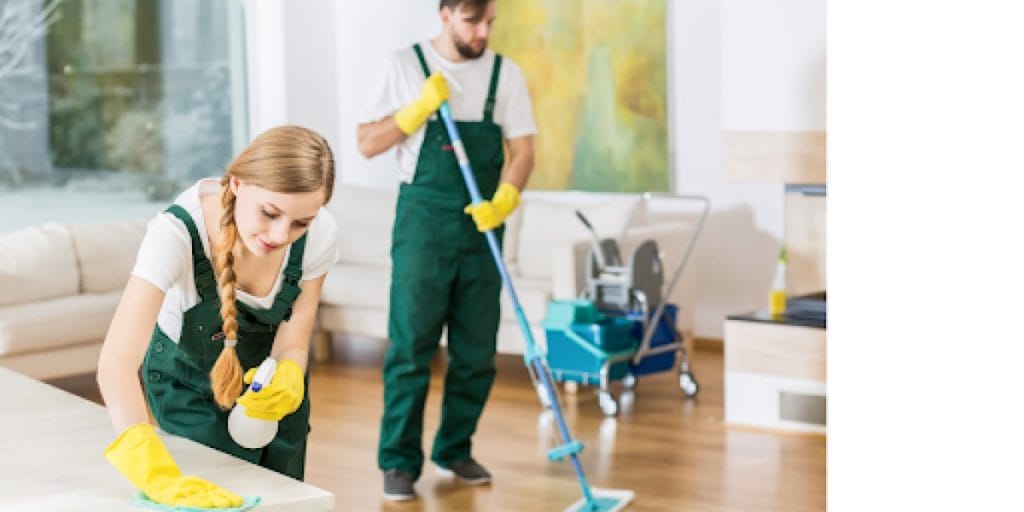
What to Consider Before You Price Cleaning Services
There are some things to take into consideration in how to price cleaning services, whether hourly, flat rate, or by the square foot. Let’s discuss!
1. Location
The average cost of cleaning services in 2020 was between $25 to $90 per hour. Do you know why the range is so large? Location, location, location. It all comes down to where you work and service clients.
Consider factors such as the cost of living for your area, median household incomes, and competition availability. You should also consider that location drives demand—certain areas will have a higher percentage of people looking to hire professional cleaning services. Here is the average median household income in the United States in 2022, provided by the Census Bureau.
2. Competition
It can be helpful to check local competitors’ cleaning services pricing, especially as you are talking with customers who have likely price-shopped. When you peruse their site or call their team, find out which cleaning business pricing structure they use. This research can be helpful if you do not understand the cost of living in the area because you are new to it.
Steps to Competitive Research
- Identify Your Main Competitors
- Analyze Their Online Presence, Cleaning Services Pricing, and Offerings
- Read Their Online Reviews
- Identify Areas for Improvement or Unique Selling Points
If you are in an area with steep competition, one of the most important things you can do is find a unique selling point for your business. With the research you have done, it is easy to find a unique benefit you can offer to clients.
3. Years of Experience
One thing new businesses often forget about is the value of experience. Price yourself to make a profit once you calculate the cost of cleaning supplies and tools, but be fair in your assessment of your professional skills and understanding. People will pay more for seasoned professionals, which is never something you should falsify in your advertising.
As your business grows, you will find you can charge more for your services based solely on how long you have been in business. Your experience, number of employers, and a busy schedule will all contribute to your cleaning services pricing.
4. State of Home
We hear this time and time again from janitorial staff and maids. When starting a cleaning business, they forget to consider how much work some jobs can take solely because of their condition! Don’t forget to factor in one vital thing: the state or condition of the space you are cleaning. Pricing should vary based on things like “move-outs” and foreclosures.
Clearly list that “deep cleaning” prices will vary. The typical increase for a residential deep clean is at least $60/hour. But, always factor in actual circumstances to your cleaning services pricing, as we have discussed. There is so much that goes into how to price your cleaning services. Take your time and do it right!
5. Size of Cleaning Space
Probably the most obvious is the size of the space you are cleaning. Do your math here to ensure you understand each job’s complexities (e.g., will there be more carpet than hard-surfaced floors to clean?).
Not all office janitorial jobs will be the same, nor will housekeeping jobs. You will have to factor the size by the number of rooms or square footage when trying to figure out how to price your cleaning services.
6. Types of Cleaning Services
Understanding the nuances of various cleaning services is essential not only for tailoring your offerings but also for establishing a cleaning business pricing structure that accurately reflects the scope and complexity of each service. Here’s an overview of different types of cleaning services and how they could vary in pricing:

Residential Cleaning
Residential cleaning, also known as house cleaning, focuses on individual homes and apartments, covering tasks like dusting, vacuuming, and bathroom cleaning. Cleaning services pricing can depend on home size, cleaning frequency, and additional services. Residential cleaning services often charge per hour or provide flat rates for standard packages.
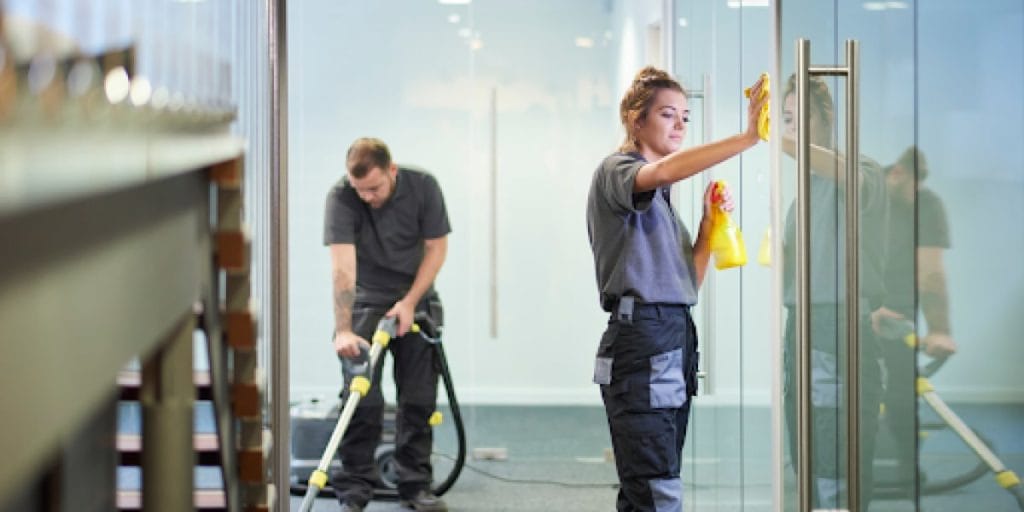
Commercial Cleaning
Geared towards businesses and commercial establishments, commercial cleaning often involves larger spaces and specialized equipment. Commercial cleaning pricing can be influenced by factors like facility square footage, specific cleaning needs, and service frequency. Commercial cleaning services may offer customized quotes based on these variables.
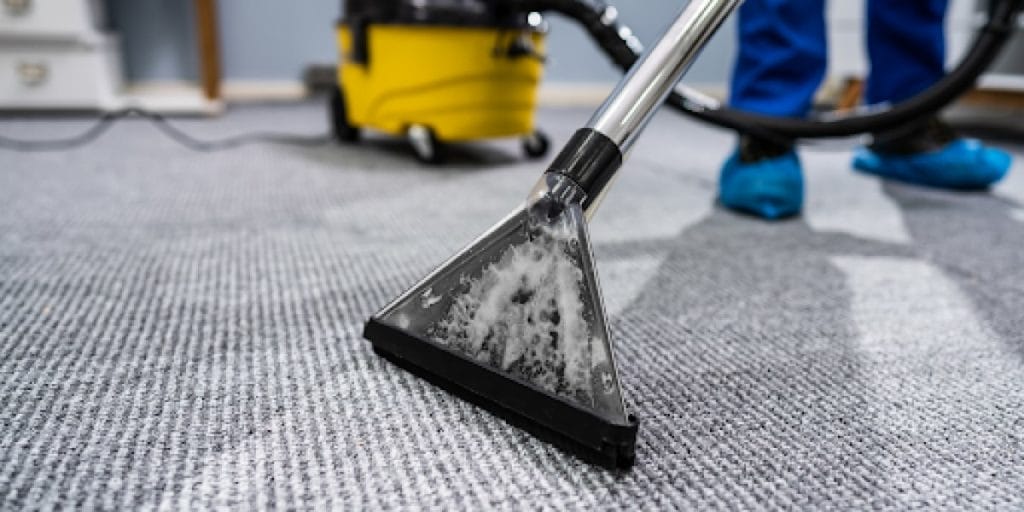
Carpet Cleaning
Carpet cleaning is a specialized service for the thorough cleaning of carpets and rugs using various methods like steam cleaning or dry cleaning. Cleaning services pricing is often determined by carpeted area size, carpet type, and cleaning method. Additional services like stain removal may incur extra charges.

Window Cleaning
Window cleaning concentrates on cleaning and polishing windows and glass surfaces. Prices may vary based on factors like window number, size, accessibility, and whether interior, exterior, or both types of cleaning are needed. Some cleaning services charge per window, while others offer package deals.
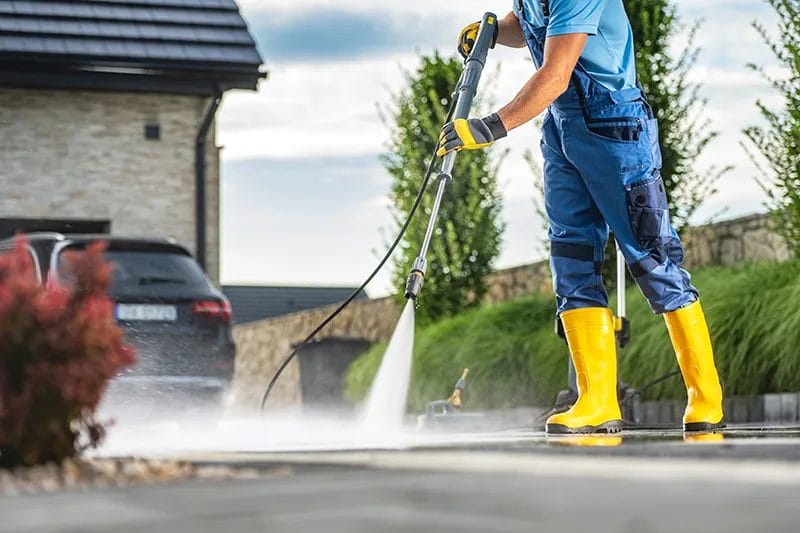
Pressure Washing
Pressure washing involves the use of high-pressure water to clean outdoor surfaces such as driveways, patios, decks, siding, and more. Pricing can depend on the surface area, material, level of grime, and any required pretreatment. Many cleaning businesses charge by square footage or offer package rates for larger projects.
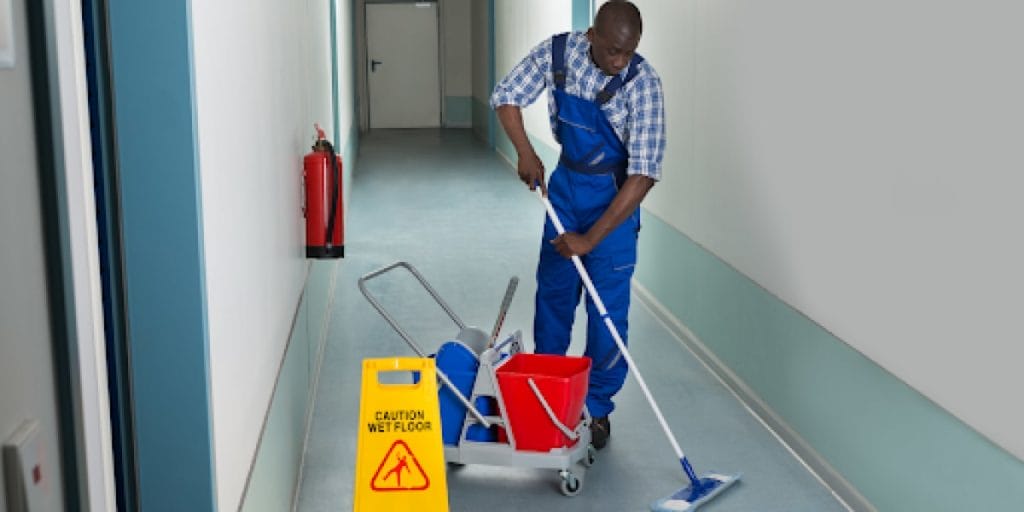
Janitorial Services
Janitorial is a comprehensive cleaning service for maintaining facility cleanliness, involving routine tasks like trash removal and restroom cleaning. Quotes based on facility size, service frequency, and janitorial task scope. Some cleaning services offer fixed pricing with monthly or annual contracts.

Green Cleaning
Green cleaning emphasizes the use of environmentally friendly cleaning products. Cleaning services pricing may be slightly higher due to eco-friendly product costs. Marketed at a premium, appealing to environmentally conscious customers willing to pay extra for sustainable practices.
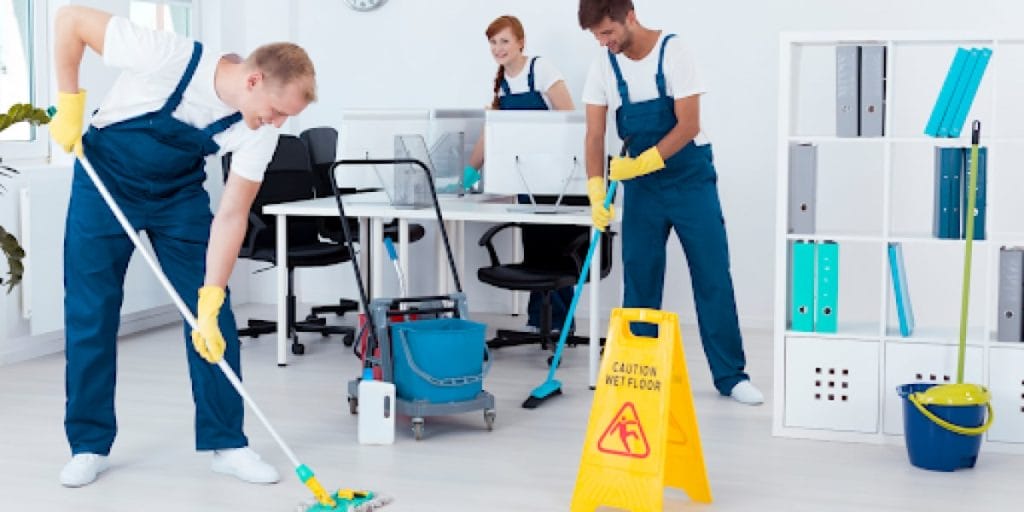
Specialized Cleaning Services
Specialized cleaning services include deep cleaning, move-in/move-out cleaning, and post-construction cleaning, tailored to specific situations. Cleaning services pricing is often higher due to the intensive nature of the work. Factors like cleaning level, space size, and unique challenges contribute to the final cost.
Common Pricing Mistakes to Avoid
To help you navigate the pricing minefield, here are some common pricing mistakes to avoid.
Underpricing Services
One of the biggest mistakes that businesses can make is underpricing their services. While it may be tempting to offer rock-bottom prices to attract more customers, this can actually hurt your business in the long run. Underpricing not only devalues your services, but it can also give the impression that your services are as flimsy as a bargain bin feather duster. It’s important to understand the value that you are providing to your customers and price your services accordingly. Remember, even the fanciest vacuum can’t pick up if it’s set too low.
Ignoring Market Trends
Another common pricing mistake is ignoring market trends. Keeping an eye on what your competitors are charging for similar services can give you valuable insights into pricing strategies. If you price your offerings significantly higher or lower than the market average, you may struggle to attract customers. By staying informed about market trends, you can ensure that your prices are competitive and reflective of the current market conditions. It’s like knowing when to swap out your mop head—keeping up with the trends keeps your business fresh and effective.
Inconsistent Pricing
Consistency is key when it comes to pricing. If your prices are constantly changing, it can confuse and frustrate customers. This inconsistency can erode trust in your brand and make it difficult for customers to budget for your services. It’s important to establish a pricing strategy and stick to it, making adjustments only when necessary and communicating any changes to your customers. Think of it as cleaning a window—you need a steady hand and a clear vision, or you’ll end up with streaks all over the place.
How Much Does a Cleaning Business Make a Month?
If you’re wondering how much does a cleaning business make a month, income can vary greatly depending on various factors such as location, target market, services offered, pricing, and the number of clients. On average, a small cleaning business can make anywhere from $1,000 to $2,500 per month, while larger cleaning companies can earn upwards of $30,000 or more per month. Just imagine your bank account going from dusty to dazzling!
FAQs on How to Price Your Cleaning Services
Can I charge more for cleaning services if I have insurance?
Absolutely! Having cleaning business insurance can be a big selling point and justify higher rates. Insurance provides peace of mind to clients, assuring them that any potential mishaps or damages will be covered. Think of it as an extra layer of polish on your service offering—clients are often willing to pay a premium for that added shine. So, yes, you can and should factor in your insurance coverage when setting your prices.
Are there specific insurance considerations when pricing cleaning services?
Yes, insurance considerations can directly impact your pricing. Liability coverage protects against accidents and damages, and higher coverage usually means higher premiums, which should be reflected in your rates. If you have employees, workers compensation insurance is crucial and can be a significant expense, so include it in your pricing. Being bonded adds trust for clients, justifying slightly higher prices.
Is insurance a requirement for cleaning contracts?
While not always legally required, having insurance is highly recommended and often expected by clients. Many commercial contracts and savvy homeowners will insist on it. Insurance not only protects you and your clients but also demonstrates professionalism and reliability. So, while you might find some clients who don’t require it, having insurance can help you secure more contracts and justify your pricing.
Maximize Profits, Minimize Risks with Insurance Canopy
Your cleaning business is your livelihood, so don’t leave it unprotected. Even with the right cleaning business pricing structure, one disaster or incident could leave you with a mountain of financial responsibility. Secure your assets with the right coverage at Insurance Canopy. Get a quote today by filling out our quick and easy online application!



